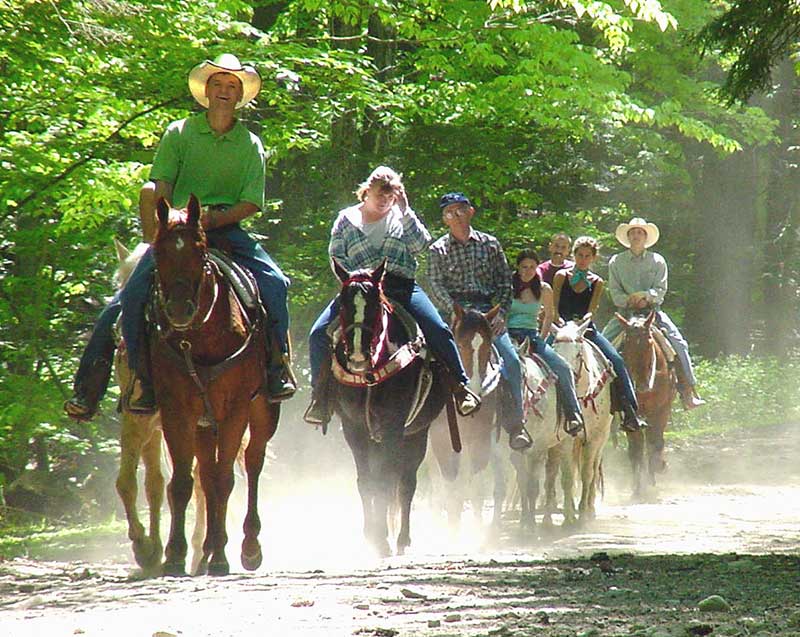Today we go horseback riding at the Ridin-Hy Resort. So put on your cowboy boots and climb into the saddle at my little stable.
Wait! Is the saddle secure? I know, you’ve only had a grand total of 10 hours of horseback riding experience in your life, but isn’t that enough to know that the saddle may slip and you might fall to the ground?
Isn’t that what assumption or risk is all about! It’s a horse: everyone knows they kick, they toss people, sometimes folks get hurt!
You’re not going to blame me for flopping off the horsie on the beginner ride, are you?
What do you mean you want to sue me because you got hurt? So your saddle slipped. It can happen. You must have been sitting on it wrong! Here’s how our funny judge wrote about you:
As her horse again began to move forward she attempted to straighten the saddle without success and fell. It is not clear from the record in this motion in limine if the saddle came off of the horse but the plaintiff certainly did.
Huh? Whaddya mean, judge, that I can’t show the jury the release she signed! I know, in New York we can’t get cases like this dismissed by having the participant simply sign a waiver absolving me of negligence, as that would violate the law and be against public policy.
But look, that risk was right here there in our release that you signed! OK, well maybe that particular risk isn’t really spelled out, but shouldn’t we show the release to the jury anyway so that the jury might get the gist of it? The judge summarized my argument well!
“The opposition’s novel theory is that this unenforceable agreement’s language can still be used, perhaps with redactions, to demonstrate the plaintiff’s express awareness that saddles may loosen and riders may fall…”
OK, I see judge. You’re going to keep this release away from the jury because our injured rider was still a rookie, or at least, the jury gets to determine that:
[A]n assessment of whether a participant assumed a risk depends on the openness and obviousness of the risks, the participant’s skill and experience, as well as his or her conduct under the circumstances and the nature of the defendant’s conduct’ ” (Decision: Boland v Riding High Dude Ranch, Inc.)
So maybe next time I’ll put this into the release — that the saddle may slip — so that riders are aware of the problem and can recognize problems before they get hurt?
Perhaps I’ll get that Turkewitz fellow to write me a better release — one that isn’t just poorly designed to dissuade lawsuits and gets chucked as being against public policy — to actually educate participants in the sporting activity they are undertaking. So they are less likely to get injured to begin with.
Like he did here with his trail race, whose release and waiver he once crowd-sourced on his blog.
Because in order to assume a risk, one has to actually have an awareness that the risks exist.

They should consider moving to Florida. Here, your release need not mention the specific danger. It need not even mention that it is releasing from the vendor’s negligence, or even that it is releasing from negligence at all. See Sanislo v. Give Kids the World, 157 So.3d 256,259 (Fla. 2015).
So, no need to worry people by enumerating the hazards in the activty. No need to even mention that there is danger, so long as a knowledgeable person would know what he is releasing.
Admittedly this was a change from the law in the past, where to release vendor’s negligence the form had to actually say you were releasing vendor’s negligence. Because, in the past, knowledgeable persons did not expect vendors to not use ordinary care.
(I do not do PI. I do not normally defend PI. I am not licensed in your state. This is not legal advice.)
No need to even mention that there is danger, so long as a knowledgeable person would know what he is releasing.
This goes to the heart and soul of the issue: Rookie participants in sporting activities don’t always have that knowledge.
Not just rookies. A person who has been riding for years may still not understand that they are releasing the vendor’s negligence, when (a) there is no mention of releasing it and (b) historically releases do not silently release vendor negligence.
A person who has been riding for years may still not understand that they are releasing the vendor’s negligence
In New York, a vendor’s negligence cannot be released by signing a form. If, however, the participant knew of the risks and accepted them by participating, that could render moot any negligence by the organizer of the event.
“Rookie participants in sporting activities don’t always have that knowledge.”
Surely the solution is state licensing in order to ride a horse. A new commission, Department of Horsing Around, will be created. It will draw up requirements for the three stages of licensing: Learner, Non-Commercial, Commercial (a Commercial Horsey license permits its holder to put a passenger on one’s saddle.behind the licensee). There will be a written exam, an eye test, and a practical exam where the applicant must, among other things, parallel park the horse in a stall.already occupied by two other steeds.
Need to determine if the rider is aware of the risks? Display license in order to ride. Problem solved.